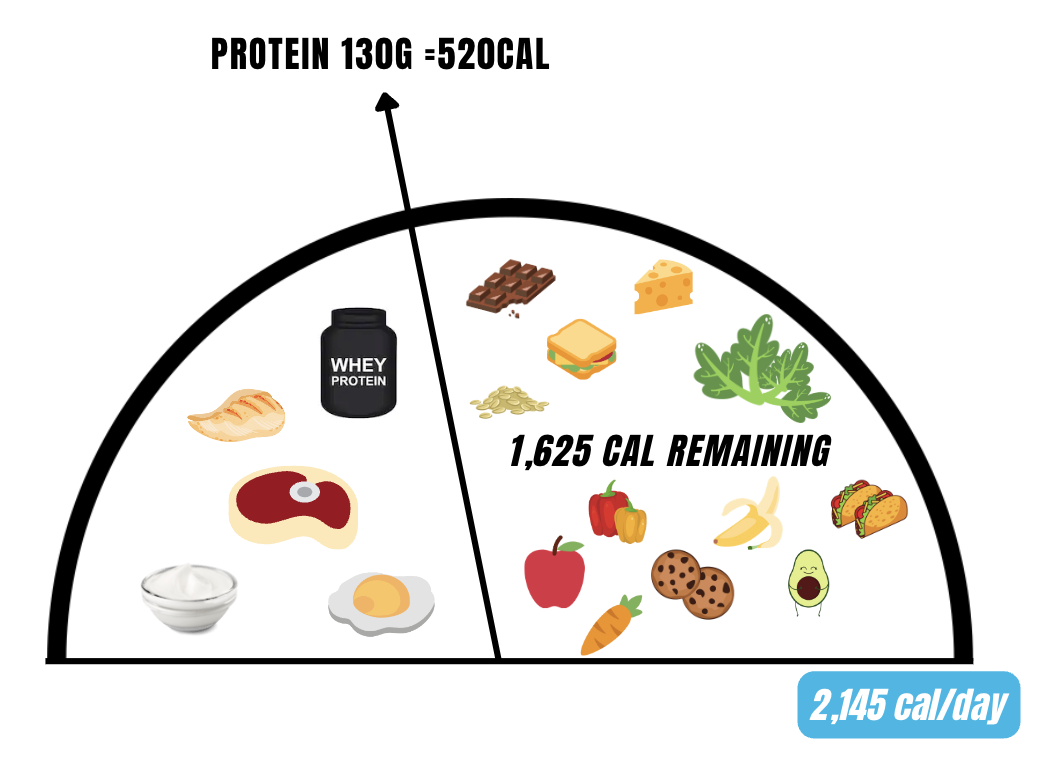THE NUMBER ONE THING YOU NEED IN YOUR DIET
The most common deficiency we see in active individuals is lack of adequate protein. It’s typically the number one strategy we address during Jolt Nutrition Methods, and makes the biggest difference in body composition, health, and overall lifestyle long term.
Protein is essential for bodily tissue and repair including skin, muscles, bone, cartilage and blood. Without adequate protein you’re more at risk for disease, illness, pain, and injury.
Common signs of under consuming protein include:
Lifting weights, but not building any muscle
Often injured
Low body temperature
Increased body fat percentage
Mood swings and energy crashes
Uncontrollable cravings and hunger
Hair loss and brittle nails
Weakness and fatigue
It becomes impossible to build a resilient life and body without adequate protein intake, and no - peanut butter is not a protein source.
HOW MUCH PROTEIN DO I NEED?
When it comes to caloric intake, as long as we hit the protein goal, the carbohydrate and fat intake can be manipulated while staying in the total caloric goal. For example, if the total calorie goal is 2,145 calories and the protein goal is 130g (520 calories), then the remaining 1,625 calories can come from fats or carbohydrates. Some people may perform better with more carbohydrates and others with more fat, and it can also change depending on daily activities. However, two things remain consistent adequate protein and total calories.
When strength training regularly we need .7-1.2g of protein per pound of lean body weight. We find that most members are successful with 1g of protein per pound of lean body weight. At this rate we see, muscle growth, fat loss, less cravings, and more energy.
LEAN BODY WEIGHT CALCULATION
Lean body weight is calculated by taking the total body mass and subtracting body fat. The most accurate way to determine body fat is skin callipers, DEXA scan, and hydrostatic weighing. Most people do not have access to these measures and rely on digital scales that use Bioelectrical Impedance Analysis (BIA). BIA devices detect how the body responds to small electrical currents. This is done by placing electrodes on your skin or stepping onto the metal plates on an at home scale. One electrode sends currents into your body, while the other receive the signal after it has passed through your body tissues. Electrical currents move through muscle easier than fat due to the higher water content of muscle. The BIA device automatically enters your body’s response to the electrical currents into an equation that predicts your body composition. However, the accuracy can vary drastically based on what we eat and drink. Typically the error rate for BIA is 3.8-5%.
Example:
Siggy’s body weight is 150 pounds and she’s 20% body fat (30 pounds). Her lean body weight is 120 pounds. Therefore she needs 120g of protein per day.
PROTEIN SOURCES
The most valuable way to consume protein is through animal sources because its jam packed with other important nutrients, vitamins and minerals. It’s the biggest bang for a buck (most protein and nutrients with less calories) and animal sources have been consumed by humans for centuries. Therefore, if choosing a vegan/vegetarian diet it’s imperative that one works with a dietician to avoid nutrient deficiencies.
3 ounces skinless, baked chicken = 26 grams
3 ounces of lean ground beef = 22 grams
3 ounces grilled salmon = 21 grams
1 scoop protein powder = 25g (depending on the brand)
½ cup cottage cheese = 14 grams
1 cup plain yogurt = 12 grams
½ cup cooked lentils = 9 grams
3 ounces firm tofu = 9 grams
1 cup cooked quinoa = 8 grams
½ cup cooked black beans = 7 grams
1 large egg = 6 grams
WHEN?
Include protein at every meal and snacks to ensure satiety and stable energy levels. When a meal or snack is consumed that is mostly made up of carbohydrates and does not include protein one is more likely to suffer from unstable blood sugar and lack of satiety. This leads to fat gain long term, uncontrollable cravings, mood swings and extreme hunger.
Consider:
Oats + Yogurt
Apple + Cottage Cheese
Toast + Eggs
Pasta + Chicken
Rice + Shrimp
etc.
SUPPLEMENTS:
Whey protein is considered a processed food because of the manufacturing. However, whey is simply a dairy by product. That liquid in a yogurt container, is whey. It is naturally occurring with 9 Amino Acids and has a low lactose content. Therefore, even if you are lactose intolerant you may be able to handle a Whey Protein. If you are allergic to dairy and have adverse symptoms with whey protein try a whey protein isolate. Whey proteins are typically easily digested and utilized better than plant based proteins. Egg and beef protein supplements are also available.
High quality whey protein supplements may be necessary for people with a busy schedule, lack of cooking abilities, active individuals, and those currently under consuming protein. It’s important to remember that high quality and third party tested supplements are a safe way to increase protein intake and taking a supplement greatly outweighs the determents of low protein intake. It can get overwhelming when trying to choose the right protein powder. Choose powders with 20-30g of protein, 100-150 cals, and the least amount of additives, sugar, ingredients, and carbohydrates per scoop. Look for third party testing and approvals
Learn more about sourcing high quality supplements: Jolt Supplement Guide

